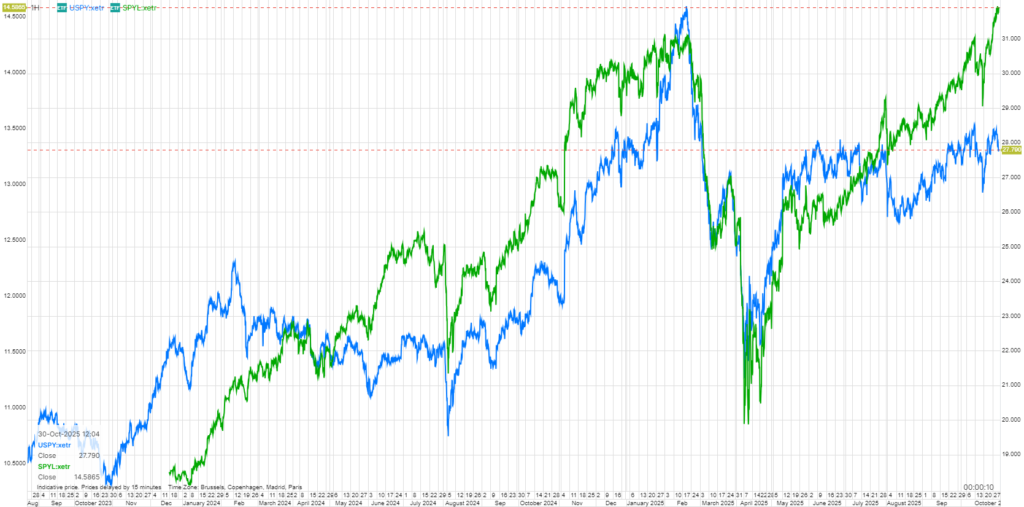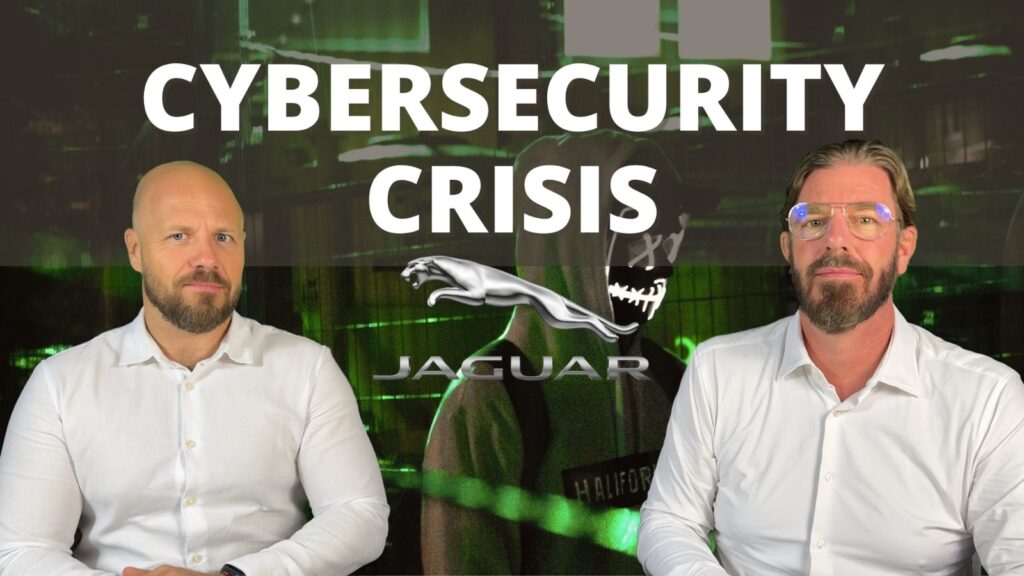Cybersecurity Crisis: How Can Investors Profit
The U.S. government shutdown is now in its second month. But the story that actually matters for portfolios right now isn’t about macro noise, it’s about a single, prolonged cyberattack that knocked one of the UK’s biggest manufacturers off its feet and exposed how fragile modern supply chains can be. Let’s talk about investing in cybersecurity.
The headline: a month-long shutdown at Jaguar
In late August 2025, Jaguar Land Rover (JLR), owned by Tata Motors (TMPV:xnse), was hit by a major cyber incident. To contain it, production systems were shut down across multiple plants (not only in the UK, but reportedly abroad), and even sales/after-sales software was taken offline. In short: cars weren’t being built and dealers couldn’t transact as normal. The operational hit appears measured in weeks, not days, an eternity in just-in-time manufacturing operations.
Two takeaways jump out for investors:
Cyber is now a core operational risk, not just an IT line item. When logistics and dealer systems go dark, revenue stops, and shareholders start asking questions.
Cash buffers and credit lines get tested. Prolonged outages force companies to lean on liquidity and sometimes governments or parents for support.
Whether or not ransom demands were involved or data was stolen at scale, the message is the same: the impact from cyber events now spans factories, suppliers, dealers, and customers.
Why this one matters beyond autos
IP and data risk: Modern cars are rolling computers. If build codes, firmware, supplier integrations, or customer data leak, remediation is costly and slow.
Contagion via suppliers: Tier-1 and Tier-2 vendors share integrations. One weak link can idle multiple plants.
From capex to continuity: Boards will increasingly treat cyber resilience like insurance and inventory, essential to stay in business.
If you are interested in we technologies representing future growth opportunities for investors, we recommend you see our article on AI Robots: Why Elon Musk Believes This Will Be His Biggest Product Ever
Investing in Cybersecurity
You don’t need to be a security engineer to position for this. Here are some interesting investment themes and the leading firms that investors could look at:
1) Endpoint & consumer security (the “lock your laptop” layer)
Theme: Antivirus/identity protection for households and single users.
Gen Digital (GEN:xnas): parent of Norton, Avast, AVG, and Avira; global leader in consumer cyber protection.
McAfee Corp: now privately held by TPG consortium, still dominant in household endpoint security.
Trend Micro (4704:xtks): strong consumer and SMB footprint across Asia and Europe.
Investment angle: Durable cash flows, slower growth, often shareholder-friendly capital returns. Less sexy; more predictable.
2) Enterprise detection & response (the “catch it fast” layer)
Theme: Cloud-first platforms that detect, contain, and remediate attacks across thousands of endpoints and identities.
CrowdStrike (CRWD:xnas): Falcon platform; leader in endpoint detection and response and threat intelligence.
Palo Alto Networks (PANW:xnas): broad network security and cloud protection suite, heavy AI integration.
SentinelOne (S:xnys): next-gen autonomous EDR/XDR platform; smaller but high-growth challenger to CrowdStrike.
Investment angle: Higher growth and P/E ratio. Leaders here use AI at scale and increasingly bundle identity, data, and workload protection.
3) Pre-installed cyber software (the “already installed everywhere” layer)
Theme: Security tools bundled into widely deployed operating systems such as Windows and productivity suites.
Microsoft (MSFT:xnas): Defender suite across Windows, Azure, and Microsoft 365, the world’s most deployed cyber protection.
Apple (AAPL:xnas): deep OS-level security within macOS and iOS, a privacy-first design.
Google (GOOGL:xnas): integrated threat detection in Workspace and Chrome, a rising enterprise player.
Investment angle: Security is a stable revenue stream with massive distribution. Not pure-play, and the companies have revenue streams from many unrelated sources.
Future technologies like cybersecurity and AI may be flashy and all over the headlines, but if you are interested in learning about another silent trend that remains undiscovered by investors, and may represent a massive opportunity for returns, we recommend you see our analysis on Investing in Longevity/Anti-ageing Stocks: a $38 Trillion Opportunity
Diversify with ETFs when investing in cybersecurity
There are broad cybersecurity exchange-traded funds (ETFs) that hold a basket of shares including in the above companies, that investors can trade on our investment platforms. These funds can be traded like shares and are great to diversify the risk of holding a single company’s stock.
ETFs also allows investors to gain exposure to the massive growth in the cybersecurity sector, without looking through the fundamentals and stock-picking. The ETFs we have listed have large AUMs and high liquidity.
Popular ETFs for European investors include:
- L&G Cyber Security UCITS ETF (USPY:xetr)
- iShares Digital Security USD UCITS ETF (L0CK:xetr)
- First Trust Nasdaw Cyber Security UCITS ETF (CBRS:xetr)
Positioning tip: Combine one broad cyber ETF (for baseline exposure) with 2-3 share positions, for example: a large position in say L&G Cyber Security UCITS ETF (USPY:xetr), and one position in large cap blue chip cash-cow such as Gen Digital (GEN:xnas), one position in a high-growth small cap such as SentinelOne (S:xnys). That blends resilience and upside. The exact composition of your positions in large and small caps will depend on your risk tolerance.

Source: Saxo Bank
We can see from the chart above the performance of the L&G Cyber Security UCITS ETF (USPY:xetr) (blue) compared to the SPDR S&P 500 UCITS ETF (SPYL:xetr) (green). The cybersecurity ETF has performed similarly to the S&P 500, but as always, it is difficult to beat.
Learn how to manage your risk before investing in cybersecurity
Valuation discipline: Some leaders trade at eye-watering multiples (P/E ratios). Size positions accordingly and prefer staggered entries.
Concentration risk: Don’t let one cyber leader become a dominate your cyber positions. Balance with an ETF and mature and cash-generating firms.
Event risk: Ironically, vendors can also be breached. Diversify across sub-sectors or use ETFs to avoid single-point failure.
Bottom line
Cybersecurity has shifted from a niche “tech theme” to a core allocation in a modern portfolio. The JLR incident is a blunt reminder that downtime now destroys not just data, but production, sales, and cash flow. For those investing in cybersecurity, a sensible strategy may be to own the basket ETF for the growth trend and to diversify exposure, and pick a couple of quality shares of cyber leaders, and size with respect to valuation.
Open an account today to access our trading platforms. Choose from a single account, a joint account with someone else, or a corporate account for your business
Whether you are new to investing or an experienced trader; we have you covered! Hugo guides you through the platforms and explain all the tools and functionalities.
For more information we suggest you see our latest YouTube vlogs below. We post regular MarketReporters on hot topics relevant to you as an investor. If you are interested in investing in other technologies that will define our future, please see our video below on the AI Boom, or Total Control?
If you’d like to further explore investing in cybersecurity, feel free to contact us an schedule a visit our office on Marbella’s Golden Mile.
We wish all investors success! Trade Saf€.

Kaspar Huijsman
Kaspar is a passionate investor known for his thorough analysis of news and market
dynamics. With over 25 years of experience in the financial world, he never relies on half- truths and always prioritizes knowledge.
“An investment in knowledge pays the best interest.”
— Kaspar Huijsman
The information in this article should not be interpreted as individual investment advice. Although Hugo compiles and maintains these pages from reliable sources, Hugo cannot guarantee that the information is accurate, complete and up-to-date. Any information used from this article without prior verification or advice, is at your own risk. We advise that you only invest in products that fit your knowledge and experience and do not invest in financial instruments where you do not understand the risks.

